A symbiotic culture of specialized yeast and bacteria can generate tough materials able to perform a variety of functions.
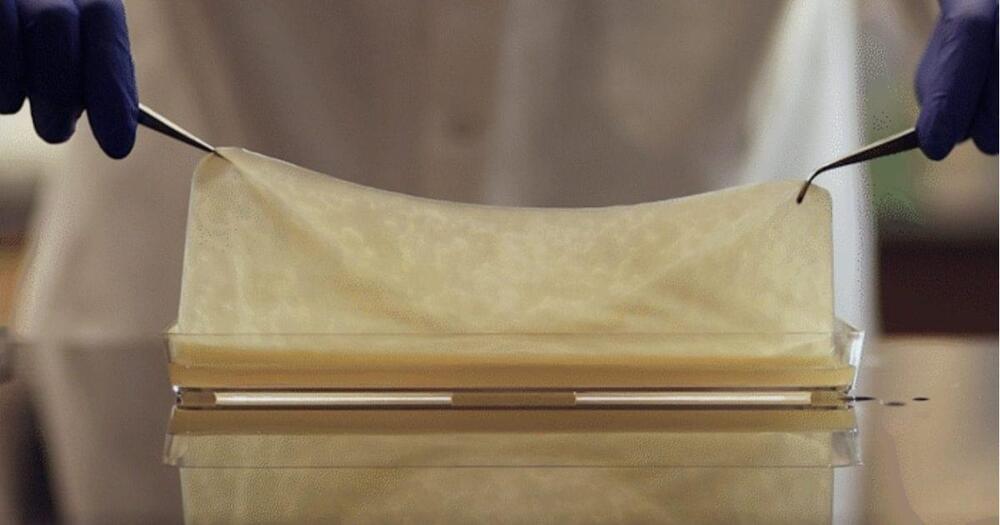

Computers, cars, mobile phones, toasters: countless everyday objects contain microchips. They’re tiny, unremarkable and cheap, but since the outbreak of the coronavirus pandemic, they’ve been at the center of a political and industrial tug of war.
Against the backdrop of the trade war between China and the US, “The Microchip War” spotlights all the aspects of this conflict. In the film, the world’s most influential actors in this industrial sector weigh in.
No one is in any doubt that microprocessors are as strategically important as oil. The battle over microchips could potentially redefine the geopolitical world order. In the United States and Europe, fears over a microprocessor shortage have led to a flood of investment pledges. After ceding microchip production to Asia in the 1990s, market leaders in the West are now trying to bring production back home and thereby regain control of the production chain.
This resulted in the adoption of new legislation in 2022: the European Chips Act initiated by the EU Commission under Ursula von der Leyen and — in response to this — the American “Chip and Science Act” initiated by Joe Biden. China, the US, Europe: major global powers fighting over tiny microchips. Pandemic and resource scarcity have fueled the desire for industrial reconquest and economic superiority.
But is this reindustrialization actually possible? Can the West challenge the foundations of globalization in this way?
#documentary #dwdocumentary #usa #europe #asia.
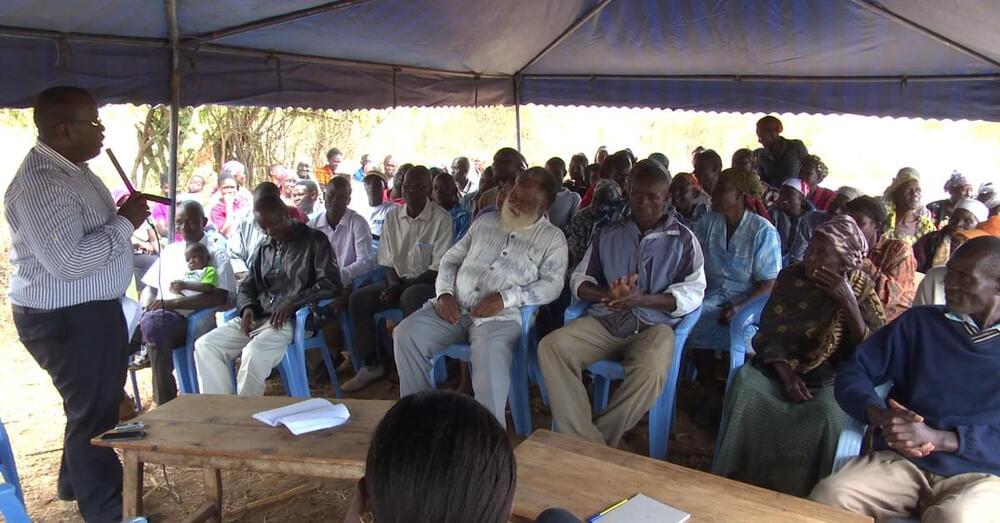
One of the big questions GiveDirectly is trying to answer is how to direct cash to low-income households. “Just give cash” is a fun thing to say, but it elides some important operational details. It matters whether someone gets $20 a month for two years or $480 all at once. Those add up to the same amount of money; this isn’t a Side Hustle King situation. But how you get the money still matters. A certain $20 every month can help you budget and take care of regular expenses, while $480 all at once can give you enough capital to start a business or another big project.
The latest research on the GiveDirectly pilot, done by MIT economists Tavneet Suri and Nobel Prize winner Abhijit Banerjee, compares three groups: short-term basic income recipients (who got the $20 payments for two years), long-term basic income recipients (who get the money for the full 12 years), and lump sum recipients, who got $500 all at once, or roughly the same amount as the short-term basic income group. The paper is still being finalized, but Suri and Banerjee shared some results on a call with reporters this week.
By almost every financial metric, the lump sum group did better than the monthly payment group. Suri and Banerjee found that the lump sum group earned more, started more businesses, and spent more on education than the monthly group. “You end up seeing a doubling of net revenues” — or profits from small businesses — in the lump sum group, Suri said. The effects were about half that for the short-term $20-a-month group.
Good telescope that I’ve used to learn the basics: https://amzn.to/35r1jAk.
Get a Wonderful Person shirt: https://teespring.com/stores/whatdamath.
Alternatively, PayPal donations can be sent here: http://paypal.me/whatdamath.
Hello and welcome! My name is Anton and in this video, we will talk about the incredible effects gut microbiome has on our body.
Links:
https://www.clarkson.edu/news/microbes-gut-might-affect-pers…s-research.
https://www.smithsonianmag.com/smart-news/fecal-transplants-…180978416/
https://www.nature.com/articles/s41586-021-03532-0
https://www.nature.com/articles/s43587-021-00093-9
https://en.wikipedia.org/wiki/Gut%E2%80%93brain_axis.
https://en.wikipedia.org/wiki/Gut_microbiota.
https://www.mdpi.com/2072-6643/14/3/466
#microbiome #gut #bacteria.
0:00 Gut Microbes Intro.
0:55 You are what you eat…on an entirely different level.
1:55 Gut Brain communication.
2:50 Important functions.
3:35 Additional function we never knew about.
4:10 Surprising diversity of genes.
5:10 Modern evolution and how it affected bacteria.
6:10 It was different in ancient humans.
8:10 Even more surprising discoveries from mice — poop transplants.
10:25 Affects our brains and our mood.
11:50 Even changes our personalities?!
Support this channel on Patreon to help me make this a full time job:
https://www.patreon.com/whatdamath.
Bitcoin/Ethereum to spare? Donate them here to help this channel grow!
bc1qnkl3nk0zt7w0xzrgur9pnkcduj7a3xxllcn7d4
or ETH: 0x60f088B10b03115405d313f964BeA93eF0Bd3DbF
Space Engine is available for free here: http://spaceengine.org.
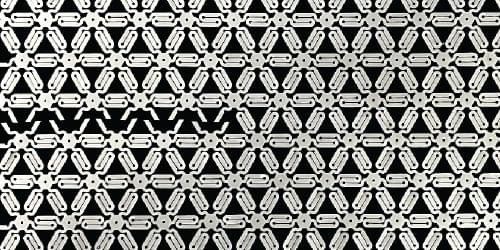
The crack resistance of polymer materials is explained by a new model that incorporates a network of stretchable polymer chains.
Plastics and other polymer materials are often very resistant to cracking—a fact that models have not been able to accurately capture. Now a research team has developed a model of polymer fracture that explains how these materials remain intact under intense stretching. [1]. The key to the model is that it accounts for polymer chains that extend deep within the material and that can share the strain that would break a material with more localized chains. The insights could lead to the development of new structures with an enhanced resistance to shocks.
Researchers typically study fracture by cutting a small notch or crack into a material and then pulling it apart. The amount of work required to enlarge the crack is called the fracture energy. For most materials, the fracture energy is equal to the energy it takes to break the molecular bonds located along the crack tip, where the enlargement occurs. For polymers, the situation is more complex, as the molecules are long chains. In the 1960s, theorists came up with a model of polymer fracture based on the rupture of individual chains at the crack tip [2]. “The problem is that this model underestimates by a factor of 10 to 100 the energy required to fracture a polymer material,” says Xuanhe Zhao from the Massachusetts Institute of Technology.
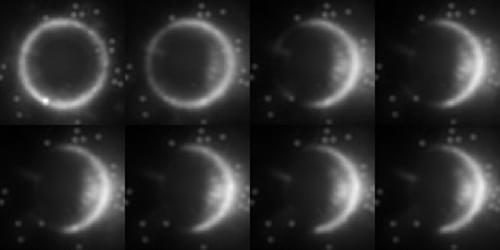
Particles dispersed in a liquid typically jitter aimlessly in response to the random buffeting they receive from the molecules that surround them. But if the liquid is subjected to a steep temperature gradient, this random motion can become directional as the temperature gradient sets up flows that move the particles from hot regions of the liquid to colder ones. The theory of this so-called thermophoresis is actively developing, but direct observations of both the suspended particles and the liquid molecules are scant. Now Tetsuro Tsuji of Kyoto University in Japan and his colleagues have experimentally characterized the tiny surface flows that drive thermophoresis [1]. Those flows could be harnessed to move and concentrate DNA and other large biomolecules that are suspended in liquids.
For their experiments, the team glued a single polystyrene sphere, 7 µm in diameter, to the lid of a tiny transparent box. They filled the box with water laced with 500-nm-diameter fluorescent tracers. Shining a laser up through the bottom of the box, the team repeatedly drew a circle around the sphere, a process that trapped tracers located within the circle of light. The team focused a second laser, tuned to one of water’s absorption bands, at a spot 18 µm from the polystyrene sphere, locally heating the water to create a temperature gradient in the liquid and across the sphere.
Using a microscope the team observed that, after a few seconds, the tracers started flowing over the sphere’s surface, moving from the sphere’s cold end to its warmer one. From the observations, the researchers showed that this flow imparted momentum to the sphere. They also inferred the force that would have propelled the sphere away had it not been immobilized. Modeling the system under different conditions confirmed the inferences.
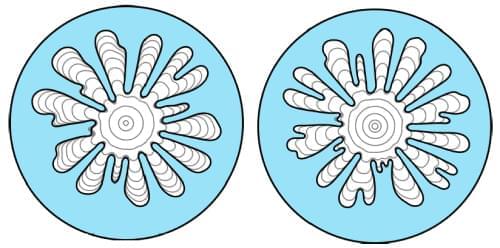

For the Gallery of Fluid Motion, researchers take the director’s chair and create videos on 3D printer patterns, frost formation, and paint swirls.
The APS Division of Fluid Dynamics has announced the 2023 winners of its annual Gallery of Fluid Motion video and poster contest. The videos below received the Milton van Dyke Award, which recognizes both videos and posters. A new traveling exhibit of past winners is currently on display at the National Academy of Sciences.
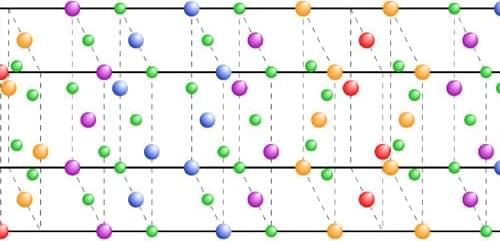
A first-principles model accounts for the wide range of critical temperatures (Tc’s) for four materials and suggests a parameter that determines Tc in any high-temperature superconductor.
Since the first high-temperature superconducting materials, known as the cuprates, were discovered in 1986, researchers have struggled to explain their properties and to find materials with even higher superconducting transition temperatures (Tc’s). One puzzle has been the cuprates’ wide variation in Tc, ranging from below 10 K to above 130 K. Now Masatoshi Imada of Waseda University in Japan and his colleagues have used first-principles calculations to determine the order parameters—which measure the density of superconducting electrons—for four cuprate materials and have predicted the Tc’s based on those order parameters [1]. The researchers have also found what they believe is the fundamental parameter that determines Tc in a given material, which they hope will lead to the development of higher-temperature superconductors.
For each material, Imada and his colleagues applied the basic principles of quantum mechanics, focusing on the planes of copper and oxygen atoms that are known to host the superconducting electrons. They used a combination of numerical techniques, including one supplemented by machine learning, and did not require any adjustable parameters.

A measurement of the charge radius of an aluminum nucleus probes the assumption that there are only three families of quarks.
In the standard model of particle physics, matter is made of elementary particles called quarks and leptons. Quarks are the heavy constituents that form, for example, protons and neutrons, whereas leptons are the light constituents, such as the electron. The six known quarks—up, down, charm, strange, top, and bottom—are split into three families. But could there be a fourth family? Answering that question would require hundreds of different measurements in particle and nuclear physics. However, not all these measurements are yet available or precise enough, and many parameter values are only inferred or extrapolated. Now Peter Plattner at CERN in Switzerland and his colleagues show how a single one of these measurements can shift our understanding of this fundamental question [1].
In the quantum-mechanical framework of the standard model, quarks can oscillate among their different flavors. The best-known example occurs in the beta decay of radioactive nuclei: a proton is transformed into a neutron (or vice versa) when one of its quarks oscillates from up to down (or down to up). The rate of beta decay depends on many factors involving both nuclear and atomic physics, but the rate at which the quarks oscillate is described by a single quantity: Vud, the so-called matrix element of the transformation of an up quark into a down quark.